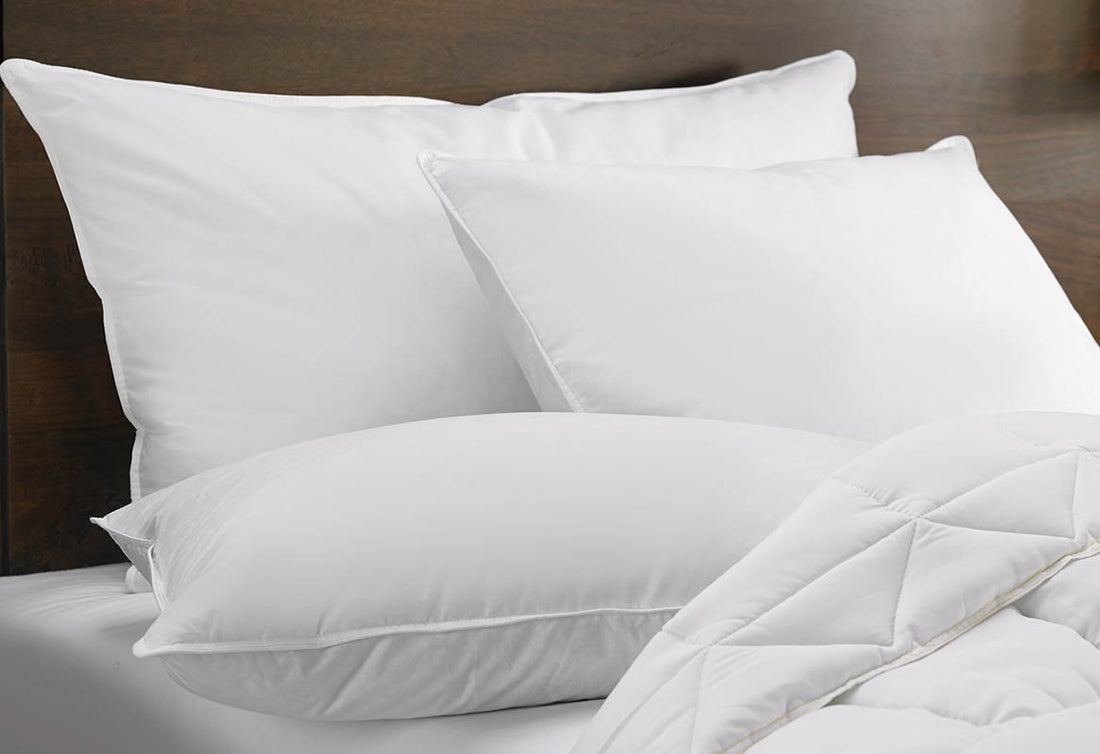How Often Should You Replace Your Pillow for Optimal Sleep? This is a question that many people overlook, but the truth is that regularly replacing your pillow is crucial for ensuring a good night's rest. In this blog post, we will discuss the importance of pillow replacement, how pillows affect your health and hygiene, signs that indicate your pillow needs to be replaced, expert recommendations on pillow lifespan, tips for choosing the right pillow, and proper maintenance to keep your pillow in top condition.

The Importance of Regular Pillow Replacement for Sleep Quality
Maintaining a high-quality sleep environment is crucial, and a key component of that is the state of your pillow. As time goes by, pillows can become less effective at providing the necessary support for your head and neck, which can lead to discomfort and interrupted sleep. This degradation in support is not always immediately noticeable, but it can significantly impact the depth and quality of your sleep over time. By adhering to the recommended timeline of replacing your pillow every 1 to 2 years, you take a proactive step in preserving your sleep quality.
Not only does the structural integrity of a pillow decline, but its ability to provide comfort can also diminish. A fresh, supportive pillow can help in maintaining the natural alignment of your spine, a factor often overlooked in discussions about sleep quality but pivotal for avoiding pain and stiffness. Regular replacement ensures that your pillow remains a tool for good sleep, rather than a barrier to it.
Moreover, the continuous use of an old pillow can introduce unnecessary challenges to getting a good night's rest. For instance, as a pillow ages, it may no longer suit your current physical needs or changes in sleep posture. Recognizing the role a pillow plays in your overall sleep experience is the first step towards making informed decisions about when to replace it, thus ensuring that every night is a step towards better health and well-being.
How Pillows Affect Your Health and Hygiene
Over time, your pillow can become a hotspot for the accumulation of dust mites, allergens, and bacteria, posing significant health risks. These unwelcome guests in your pillow can lead to aggravation of allergies, asthma, and even impact your skin health, causing breakouts or eczema. The fibers and fabric of older pillows create an ideal environment for these microorganisms to thrive, especially if the pillow is rarely cleaned or aired out. Additionally, the buildup of sweat and oils from your skin can further contribute to the degradation of your pillow's hygiene.
Regularly replacing your pillow not only refreshes your sleeping surface but also minimizes your exposure to these health hazards. It's crucial to acknowledge that even the cleanest of homes can't prevent the natural wear and accumulation of undesirable particles within a pillow over time. This consideration is paramount for those particularly sensitive or prone to respiratory or skin issues, as maintaining a clean pillow can significantly mitigate these risks. Implementing a replacement routine ensures a cleaner, healthier sleep environment, reducing the likelihood of sleep disturbances due to health concerns rooted in pillow hygiene.
By staying vigilant about the cleanliness and condition of your pillow, you're taking an important step towards safeguarding your health. This proactive approach to pillow hygiene complements other sleep hygiene practices, underscoring the integral role a clean, fresh pillow plays in your overall wellness and quality of sleep.

Recognizing the Signs of a Pillow Past Its Prime
There are unmistakable indicators that signal when it's time for your pillow to be retired. One of the most obvious signs is a significant loss of shape, leading to inadequate support for your head and neck. This can manifest in the pillow appearing flat or unable to return to its original form after being used. Lumps are another red flag, indicating that the fill material inside the pillow has clumped together, which not only feels uncomfortable but also compromises the pillow's ability to provide even support.
Discoloration, such as yellowing, is a visual cue that your pillow has absorbed body oils, sweat, and possibly saliva over time, which can contribute to the breakdown of the material and foster an environment conducive to allergens and bacteria. A musty or unpleasant odor is also a clear indication that your pillow is harboring moisture and possibly mildew, making it unsuitable for a healthy sleeping environment.
Physical discomfort upon waking, such as experiencing neck or shoulder pain, suggests that your pillow is no longer effectively supporting your sleeping posture. This can lead to strained muscles and a restless night's sleep, further emphasizing the need for a pillow replacement.
Observing any combination of these signs means it's time to consider purchasing a new pillow. Ignoring these warnings can not only affect your sleep quality but also your overall health, reinforcing the necessity of staying attentive to the condition of your pillow.
Expert Recommendations on Pillow Lifespan
The consensus among sleep specialists and healthcare professionals is clear: for the sake of maintaining optimal sleep quality and ensuring your sleeping environment remains healthy, it's advised to replace your pillow every 1 to 2 years. This guidance serves as a general rule, but it's important to recognize that the lifespan of a pillow can be influenced by its material composition. For instance, pillows filled with memory foam or latex are known for their durability and may not require replacement as frequently as their down or feather counterparts.
Engaging in routine evaluations of your pillow's condition is essential. Factors such as the pillow's ability to maintain its shape, the level of support provided, and any noticeable decline in comfort should prompt consideration of replacement. Additionally, if you observe any signs of wear and tear that could compromise the pillow's effectiveness or hygiene—such as persistent odors, staining, or the breakdown of filling material—it's likely time for a new one.
While these recommendations offer a guideline, personal comfort and sleep quality should always be the ultimate deciding factors. Adapting to changes in your physical needs or sleep preferences might necessitate a pillow update sooner than the standard timeframe. Staying attentive to how well your pillow is performing and prioritizing your sleep health will guide you in making timely replacements, ensuring every night's rest contributes to your overall well-being.
Choosing the Right Pillow to Enhance Your Sleep Experience
Selecting the ideal pillow is pivotal in optimizing your sleep quality, considering the variety of materials and designs available. When browsing for a new pillow, your personal sleeping position plays a significant role in determining the level of support and firmness you need. Side sleepers, for example, often require a firmer pillow to fill the gap between the head and the mattress, ensuring the spine remains aligned, whereas stomach sleepers might opt for a softer, flatter pillow to prevent neck strain. Memory foam pillows are celebrated for their ability to contour to the shape of your head and neck, offering tailored support that adapts to your movements throughout the night. On the other hand, down or feather pillows might appeal to those looking for a softer, more luxurious feel, though they may need more frequent replacement due to faster loss of loft and support.
For individuals with specific health concerns or allergies, considering the pillow's material composition is crucial. Hypoallergenic options, such as synthetic fills or organic materials, can significantly reduce exposure to allergens, offering a cleaner, more health-conscious sleep environment. Furthermore, features like cooling gels or breathable fabrics can cater to those who tend to sleep hot, providing a more comfortable and restful night's sleep.
Understanding your preferences, from the firmness to the pillow's hypoallergenic properties, ensures that your choice not only enhances your sleep quality but also aligns with your health and comfort needs. By focusing on these considerations, you can select a pillow that contributes positively to your sleep experience, night after night.
Proper Pillow Maintenance Between Replacements
To ensure your pillow remains supportive and clean throughout its use, implementing a consistent maintenance routine is essential. Incorporating a pillow protector is an effective first step; it acts as a barrier against dust, skin oils, and potential allergens, making it easier to keep your pillow's surface clean. Regularly washing your pillowcase, along with the protector, helps in maintaining a hygienic sleep environment. Gently fluffing your pillow daily assists in preserving its shape and support, allowing for even wear over time. When cleaning the pillow itself, opt for gentle washing methods recommended by the manufacturer, and avoid excessive water and harsh detergents that can degrade the filling and fabric. Allowing your pillow to air out in a dry, well-ventilated space can also eliminate moisture and odors, keeping it fresh between washings. Following these simple yet effective steps will not only prolong the life of your pillow but also ensure that it continues to contribute positively to your sleep quality until it's time for a replacement.

